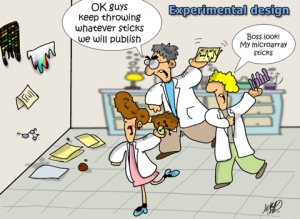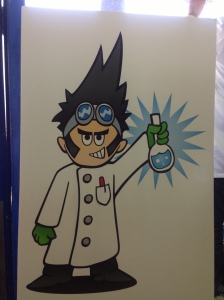“Our species can only survive if we have obstacles to overcome… without them to strengthen us, we will weaken and die.”
(Metamorphosis) James T. Kirk, USS Enterprise Captain, Star Trek (the original!)
Ask any drama queen (or king): creating challenges is fun. Politicians/economists/scientists jockey for position on viable solutions to

industrialization’s created problems. From the mortgage debacle/financial crash, climate change, obesity, cancer, hate-crimes, and illiteracy, obstacles are as plentiful as the stars.
The real obstacles which fully capture our attention are individual and personal: from getting out of bed and making it through the day, connecting with teens and silently feuding partners, finding a partner, finding a job, paying for groceries, dealing with a difficult boss or mother, deciding which brand of toothpaste is best or who to vote for on American Idol – the list goes on. We can’t deal with the big obstacles until our real ones – the personal ones – weighing us down are shrugged off .
Thing is, solving these small problems are as difficult as the big ones. And that saying? “Don’t sweat the small stuff. It’s all small stuff”. Much easier said than done.
I say: The scientific method: it’s not just for scientists anymore.
Yup, that method we re-learned in every science class is one we use daily for real challenges – kinda. Though there’s likely to be more madness than reason to our method.
If you’re about to say “yes, but…”, give your knee-jerk response a rest. Scientific experimentation is all about DISproving, making scientists the original “dis-sers”.
As a reminder “The Method’s ” steps: Identify what’s bothering you (problem), form a reason why (hypothesis), figure out what to change and action to take (experiment), see if it works (observation), declare victory or try again (conclude or start over). We do that all the time, right? Yet….
Society teaches (for the most part) there is a right answer – in the back of the book, like in science class:
By the time you reach age ‘x’, you should have achieved ‘y’.
The media bombards with what accomplishments are needed to get a good life grade. The answers are wrapped up in the “American Dream”! My hypothesis: solving for that “right” answer keeps us awake and without dreams.
I prefer: “The good thing about the American Dream is you get a new one very night” (Michael, “The Office).
Today’s the perfect day to create a new American dream using a revised scientific method? Solve for the right ‘y’ (and why).
Instead of the problem: ‘How do I get what I’m supposed to have?’
And the hypothesis: ‘I am doing ‘a’ or ‘b’ wrong.’
Reframe the problem to:
‘What is right for ME?’

Here are 5 (revised) steps based on my personal problem-solving experiments. No goggles or safety equipment needed.
- Listen to your body to identify the problem: the body never lies. Does your back tighten when it comes time to go to work? Do your fists clench when talk turns to money? There’s a problem when aches and pains appear at the thought or mention or appearance of a defined “obstacle”. Do you dive into a super-sized bag of chips before a family event or when you have a deadline approaching? Pay attention! Start by recording when you feel that “tinge”. For example, keep a food journal to keep track of overriding emotions causing you to devour the contents of your refrigerator.
- Look inside to uncover your hypothesis, the source of the problem. Identify your values and how well those values are met http://communicationessentials.wordpress.com/values-activity/. For example if you inhale a pint of ice cream every time a credit card bill arrives, identify which value is NOT being met as in: My finances are stressing me out because I don’t feel independent (value), causing me to overeat.
- Make a plan to take action. Action is the experimental heart and focuses on how to meet the value (independence) not the ice cream inhalation. Experimental (financial) plans may include contacting a debt or financial coach, setting up a saving/payment plan while developing a mantra when your fingers are at the cyberspace checkout button such as: “this (item) will whittle away my independence which makes me unhappy”. Create several steps to take to get your value met and use them for at least 21 days to create a new habit.
- Take stock of your situation. Maintaining independence through debt-free finances is fairly easy to assess when a bill arrives: can you breathe? Does the thought of the balance throw your internal equilibrium off-balance by sending you to the kitchen or elsewhere?
- And repeat. If your symptoms continue – try a new plan of action and ask for help with problem-solving. If your experiment was successful, bravo. Now it’s time to assess other body reactions to unmet values and identify what actions will remove obstacles and calm your body.
How will tapping into your inner scientist help you? Which step can you apply to your daily obstacles to uncover a winning solution?
Exploring our own nature as humans is a good time to shelve our human nature fears, especially the fear of failure. Remember, many of the best solutions are found by mistake after doing “the wrong thing”. Successful experimentation is all about failure, learning from mistakes and moving forward one step even if you’ve gone backwards two (steps). Personally, I embody the scientific notion that taking a risk and failure is an experimental “win”. Just go boldly where your values tell you to go!
Enjoy the journey and keep a data log!
